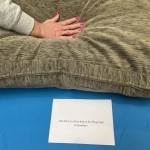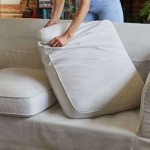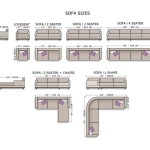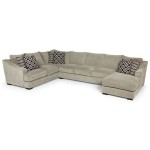How Many Yards of Fabric Do I Need for a Sofa Bed?
Determining the amount of fabric required to reupholster a sofa bed is not a straightforward calculation. Several factors influence the final number of yards needed. Neglecting these factors can lead to insufficient fabric, resulting in project delays and additional costs. This article provides a comprehensive guide to estimating the fabric needed for a successful sofa bed reupholstering project.
Sofa beds present a unique challenge compared to standard sofas because of their integrated bed mechanism. This mechanism requires additional fabric for covering the moving parts and ensuring the bed can be deployed and retracted smoothly. Furthermore, the style and size of the sofa bed, the type of fabric chosen, and the presence of patterns or complex designs all contribute to the overall fabric requirement. Proper planning and accurate measurement are crucial to avoid costly errors.
Understanding the Key Factors Influencing Fabric Needs
Several key factors dictate the amount of fabric you'll need to reupholster a sofa bed. These include the sofa bed's dimensions, style, and the specific properties of the fabric chosen. Ignoring these factors can lead to inaccurate estimations and ultimately, a shortage of material.
Sofa Bed Dimensions: The most fundamental factor is the physical size of the sofa bed. This includes the width, depth, and height of the frame, as well as the dimensions of the cushions and any attached pillows. Larger sofa beds naturally require more fabric. Measure the sofa bed carefully, taking note of all curves, angles, and areas requiring coverage. It’s always better to overestimate slightly than to underestimate, as extra fabric can be used for matching patterns or correcting minor errors. When measuring, be sure to account for any fabric that will be tucked in or wrapped around edges for a clean, finished look. Don't forget to measure the thickness of the cushions, as this will impact the depth of fabric needed for each.
Sofa Bed Style: The design of the sofa bed plays a significant role. A simple, rectangular design will generally require less fabric than a sofa bed with curved arms, tufted backs, or intricate details. The presence of welting (piping) and other decorative elements also increases fabric consumption. Complex designs often necessitate more precise cutting and fitting, leading to higher waste. Consider the number of individual pieces that need to be covered. For example, a sofa bed with multiple back cushions or a separate skirt will require more fabric than a streamlined design. If the sofa bed has any hidden compartments or storage areas that need to be covered, these should also be measured and factored into the total fabric requirement.
Fabric Type and Width: The type of fabric chosen impacts the required yardage. Thicker fabrics, like velvet or heavy linen, may be more difficult to work with and could require extra allowances for seams and adjustments. Fabrics with a nap (a raised, textured surface) will require careful pattern matching to ensure a consistent appearance, leading to increased fabric consumption. The width of the fabric roll is also critical. Wider fabrics can cover larger areas with fewer seams, potentially reducing the overall yardage needed. Standard fabric widths typically range from 54 to 60 inches, but variations exist. Be sure to check the fabric width before making any calculations. Fabrics with significant stretch may require special handling and potentially more fabric to account for distortion during the upholstery process.
Calculating Fabric Yardage: A Step-by-Step Guide
Once the key factors are understood, calculating the required fabric yardage involves a systematic approach. This involves breaking down the sofa bed into its component parts, measuring each part individually, and then applying a formula to estimate the necessary fabric. Accuracy in measurement and careful consideration of waste are crucial for an accurate final estimate.
Breakdown of Components: Divide the sofa bed into its individual components: the frame, back, seat, arms, cushions, and any additional features such as a skirt or headrest. Measure each component separately, noting the length, width, and height. For irregularly shaped components, take multiple measurements at different points to ensure accuracy. Create a sketch of the sofa bed and label each component with its dimensions. This visual aid can be helpful in keeping track of the measurements and ensuring that no part is overlooked. If the sofa bed has a complex frame structure with hidden panels or internal supports, make sure to account for these in your measurements. Take photographs of each component before disassembly, as these can be useful references during the reupholstering process.
Measurement Techniques: Use a flexible measuring tape to accurately measure each component. For curved surfaces, follow the curve of the surface with the measuring tape. Add extra length to each measurement to account for seam allowances, tucking, and wrapping around edges. A general rule of thumb is to add at least 4-6 inches to each dimension. If the original upholstery is still intact, you can carefully remove it and use it as a template for cutting the new fabric. However, be aware that the old upholstery may have stretched or shrunk over time, so it's still important to take accurate measurements. When measuring cushions, measure both the front and back, as well as the thickness. If the cushions have rounded edges, measure around the curve to get an accurate circumference. Make sure to account for any zippers or other closures when measuring cushion covers.
Yardage Estimation: After measuring each component, calculate the fabric area required for each part. Multiply the length by the width to determine the area in square inches or square feet. Convert the area to square yards by dividing by 1296 (for square inches) or 9 (for square feet). Add up the fabric area required for all components to get the total fabric area needed. To account for waste and pattern matching, add an additional percentage to the total fabric area. A general rule of thumb is to add 10-20% for solid fabrics and 20-30% for patterned fabrics. The final result is the estimated number of yards of fabric required for the sofa bed reupholstering project. There are also online fabric calculators available that can assist in estimating the required yardage, but it’s still important to take accurate measurements and consider all the factors mentioned previously. Consulting with an experienced upholsterer is also recommended, as they can provide a more precise estimate based on their knowledge and experience.
Accounting for Patterns and Specific Fabric Considerations
The presence of patterns on the chosen fabric significantly impacts the fabric yardage calculation. Patterned fabrics require careful matching to ensure a cohesive and professional look. This matching process inevitably leads to more waste and therefore, a higher fabric requirement.
Pattern Repeat: The pattern repeat is the vertical distance between the repetition of a design on the fabric. A larger pattern repeat means more fabric will be needed to ensure that the pattern aligns correctly on all components of the sofa bed. Measure the pattern repeat accurately before calculating the fabric requirement. This measurement is typically provided by the fabric manufacturer. If the pattern repeat is not readily available, you can measure it yourself by finding two identical points in the pattern and measuring the distance between them. Understanding the pattern repeat is crucial for minimizing waste and achieving a professional-looking result. For example, if the pattern repeat is 20 inches, you will need to add an extra 20 inches for every component that requires more than one "repeat" of the pattern. This ensures that the pattern lines up seamlessly across different parts of the sofa bed.
Pattern Matching Techniques: Several techniques can be employed to match patterns effectively. These include centering the pattern on key components, aligning patterns across seams, and strategically placing patterns on less visible areas. Consulting with an experienced upholsterer is recommended to determine the best pattern matching strategy for your specific project. When cutting fabric for patterned applications, leave ample seam allowance to allow for adjustments and fine-tuning during the upholstery process. Consider the direction of the pattern when cutting fabric. Some patterns look best when oriented vertically, while others are more visually appealing when oriented horizontally. If the pattern has a distinct direction, make sure to maintain the same orientation on all components of the sofa bed. Using a gridded cutting mat and rotary cutter can help to ensure accurate and consistent cuts when working with patterned fabric.
Fabric-Specific Considerations: Different fabrics have different properties that affect their suitability for reupholstering a sofa bed. Some fabrics are more durable and stain-resistant than others. Consider the intended use of the sofa bed when selecting a fabric. For example, if the sofa bed is located in a high-traffic area or used frequently by children or pets, a more durable and stain-resistant fabric is recommended. Some fabrics are more prone to stretching or shrinking than others. This can affect the fit and appearance of the upholstery. Pre-washing or pre-shrinking the fabric before cutting it can help to minimize these issues. Fabrics with a nap, such as velvet or corduroy, require special attention to ensure that the nap runs in the same direction on all components of the sofa bed. This will ensure a consistent appearance and prevent unsightly shading or color variations. Certain fabrics may require special sewing techniques or equipment. For example, leather or vinyl fabrics may require a heavy-duty sewing machine and specialized needles.
By carefully considering these factors and following the steps outlined in this article, individuals can significantly improve the accuracy of their fabric estimates for sofa bed reupholstering projects, minimizing the risk of material shortages and ensuring a successful outcome.

Upholstery Yardage Chart Chairs Couches Sofas

How Much Upholstery Fabric Do I Need For A Couch Revolution Fabrics

Sofa Fabric Estimator

How To Measure A Sectional

Calculating Fabric Yardage For Your Project Ofs Maker S Mill

Calculating Fabric Yardage For Your Project Ofs Maker S Mill

The Best Fabric For A Sofa Choosing Right Material Your Home

Yardi Yard Fabric L Shape Couch With Reversible Ottoman 3 Seat Sectional Sofa For Living Room Brown

How To Reupholster A Couch Taking Boring Brown Sectional From Basic Beautiful

Exactly How Much Fabric You Need For Pillows 11 Sizes








